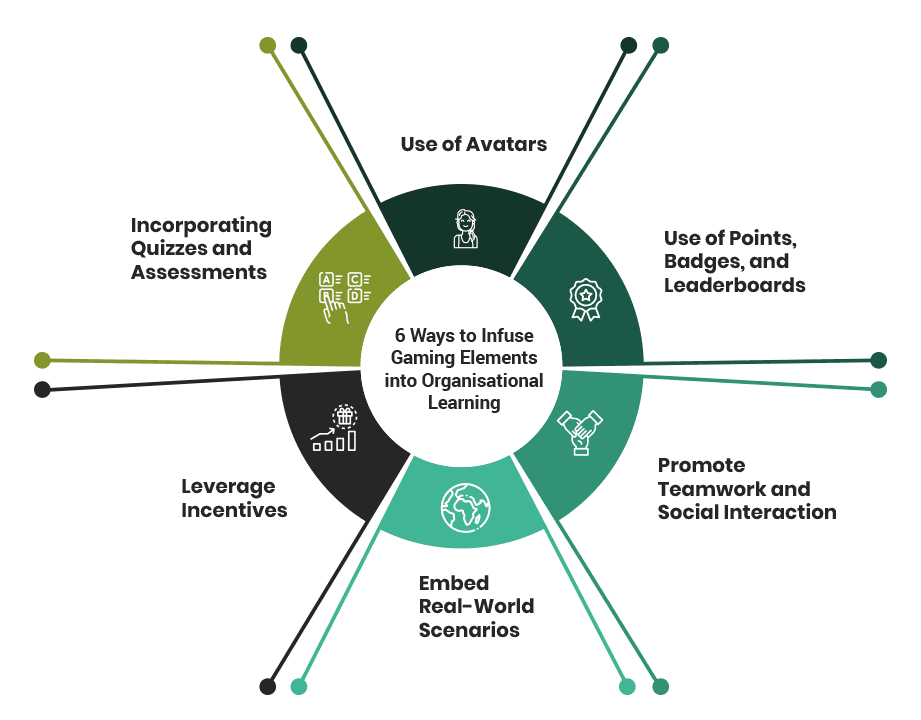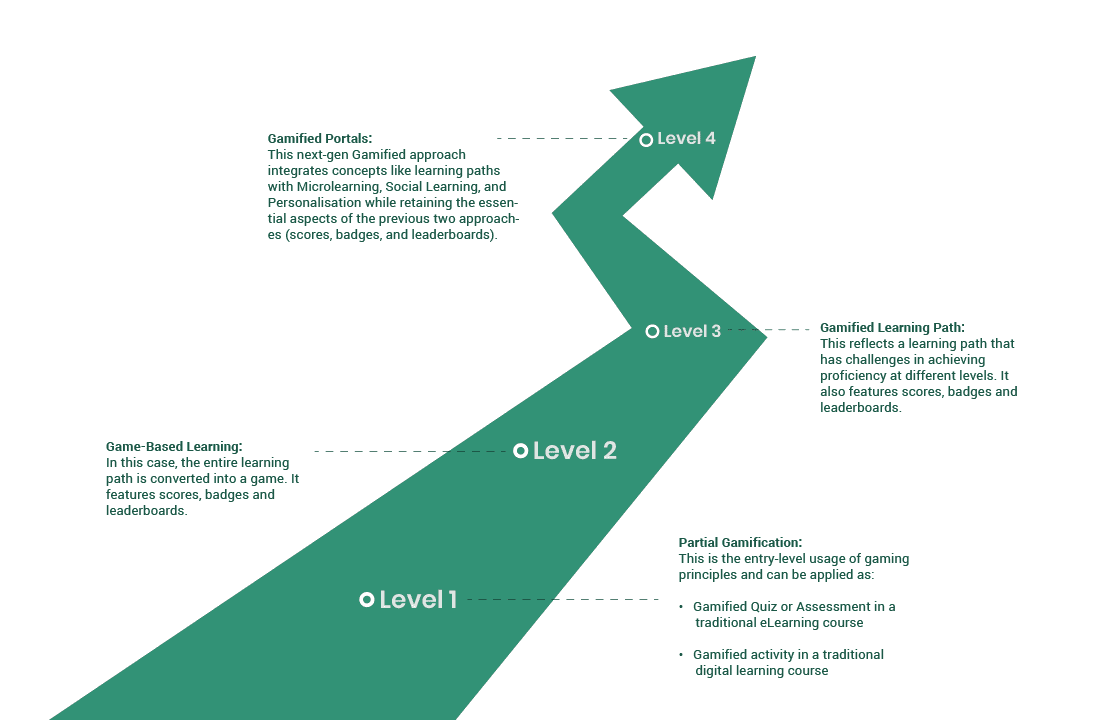Every organisation in today’s fast-paced world recognises the need to develop competencies for improved efficiency and business performance. The challenge, however, has been maintaining learner engagement, improving course completion, and facilitating knowledge transfer considering the average human attention span of 8.25 seconds and the retention rate of 30% of what is learned in 24 hours. Hence, learning and development professionals constantly challenge themselves to develop effective methods to deliver learning interventions for maximum impact.
Infusing gaming elements makes learning more dynamic, paving the way for employees to become lifelong learners and ultimately creating a learning organisation.
Various ways to infuse gaming elements into organisational learning exist, but this article focuses on six (6).
- Use of Avatars: Avatars have become a notable trend across various social media platforms, representing different individual profiles and giving a sense of connection and belonging. The same can be applied to learning, especially when it supports and adds to the content. For example, using a nurse character for healthcare training. Avatars appeal to learners’ emotions and can guide and motivate them throughout the course, making learning enjoyable and increasing retention.
- Use of Points, Badges, and Leaderboards: Incorporating points, badges, and leaderboards makes learning feel more like a game and less like an assignment. With game elements, such as challenges and levels embedded in learning materials, a sense of accomplishment makes learning more satisfying.
- Promote Teamwork and Social Interaction: A sense of community and collaboration can be created among employees using elements such as teamwork and social interaction in digital or ILT sessions. This can encourage employees to work together to achieve shared goals, foster a sense of camaraderie, and help build stronger relationships.
- Embed Real-World Scenarios: By incorporating real-world scenarios into organisational learning, the organisation’s specific needs can be addressed. This would also ensure learning is designed to align with the organisation’s goals and objectives, making learning relevant and applicable to work. In addition, this learning approach can address specific areas of improvement, such as customer service or product knowledge, and areas that employees may encounter.
- Leverage Incentives: Leveraging incentives is another way to keep learners engaged while learning. This could be by rewarding learners for completing a series of challenges or a course or recognising them using a ranking system. This ultimately promotes healthy competition among learners within the organisation.
- Incorporating Quizzes and Assessments: When adequately deployed, quizzes and assessments can help determine whether a learning intervention’s goals have been met. This can help employees identify areas that need improvement and provide a sense of progress and accomplishment as they work to improve.
Whether the gaming principle is intended or already implemented in an organisation, learning and development professionals must ascertain the level of organisational gaming maturity in applying these principles to improve staff engagement and learning. These include.
In conclusion, using elements and principles of gaming to create a more effective and engaging learning experience – Gamification, is a powerful tool for improving organisational learning. By making learning more engaging and interactive, gamification can help organisations increase employee participation and motivation, improve knowledge retention, and ultimately enhance performance. Additionally, by providing a sense of community and collaboration, tailoring to specific needs, and providing feedback and tracking progress, gamification can help organisations achieve their goals and objectives. It’s a win-win situation for both the organisation and the employees.
Written by:

Christian Edohor
Senior Consultant


